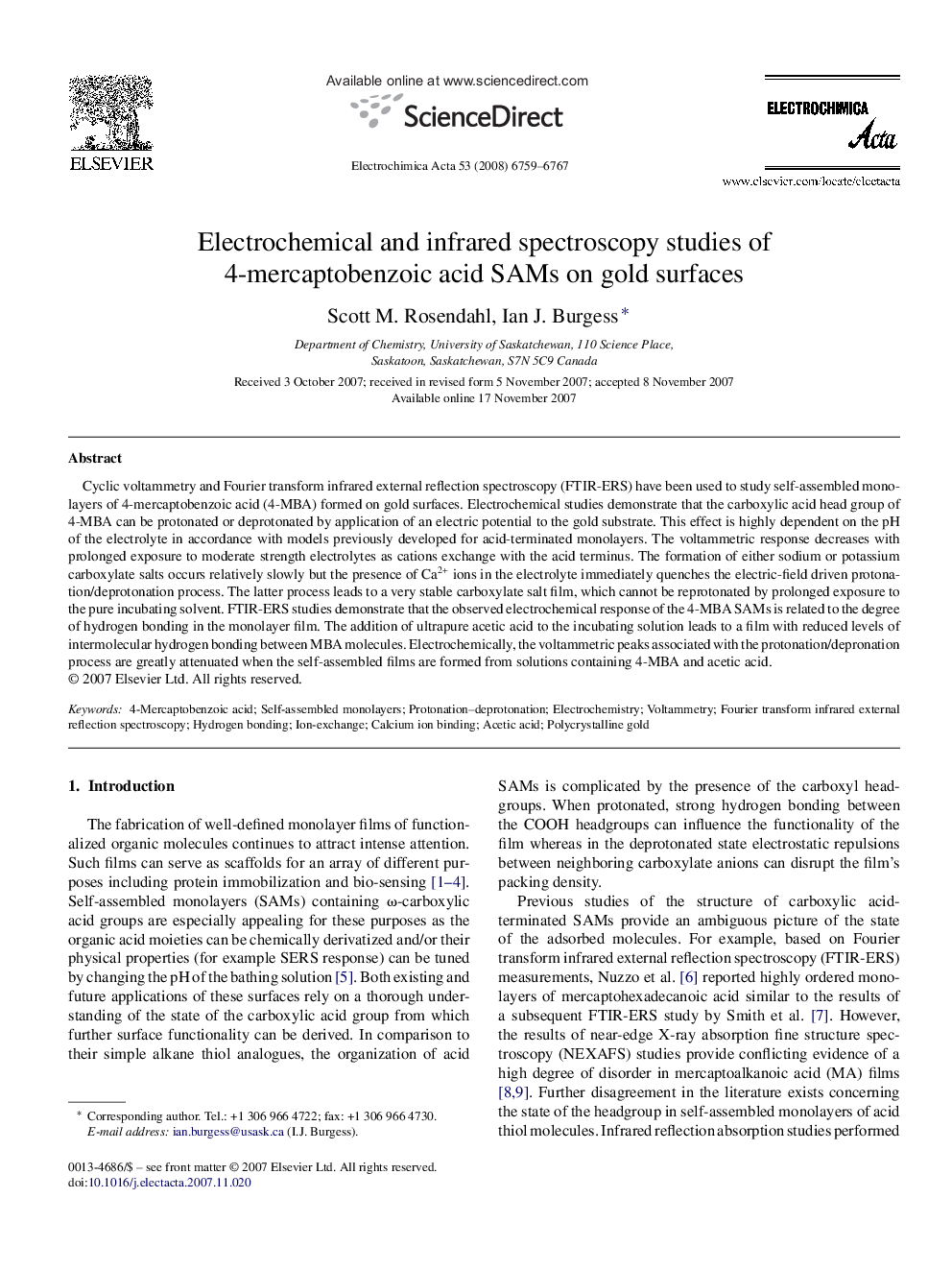| Article ID | Journal | Published Year | Pages | File Type |
|---|---|---|---|---|
| 194711 | Electrochimica Acta | 2008 | 9 Pages |
Cyclic voltammetry and Fourier transform infrared external reflection spectroscopy (FTIR-ERS) have been used to study self-assembled monolayers of 4-mercaptobenzoic acid (4-MBA) formed on gold surfaces. Electrochemical studies demonstrate that the carboxylic acid head group of 4-MBA can be protonated or deprotonated by application of an electric potential to the gold substrate. This effect is highly dependent on the pH of the electrolyte in accordance with models previously developed for acid-terminated monolayers. The voltammetric response decreases with prolonged exposure to moderate strength electrolytes as cations exchange with the acid terminus. The formation of either sodium or potassium carboxylate salts occurs relatively slowly but the presence of Ca2+ ions in the electrolyte immediately quenches the electric-field driven protonation/deprotonation process. The latter process leads to a very stable carboxylate salt film, which cannot be reprotonated by prolonged exposure to the pure incubating solvent. FTIR-ERS studies demonstrate that the observed electrochemical response of the 4-MBA SAMs is related to the degree of hydrogen bonding in the monolayer film. The addition of ultrapure acetic acid to the incubating solution leads to a film with reduced levels of intermolecular hydrogen bonding between MBA molecules. Electrochemically, the voltammetric peaks associated with the protonation/depronation process are greatly attenuated when the self-assembled films are formed from solutions containing 4-MBA and acetic acid.
